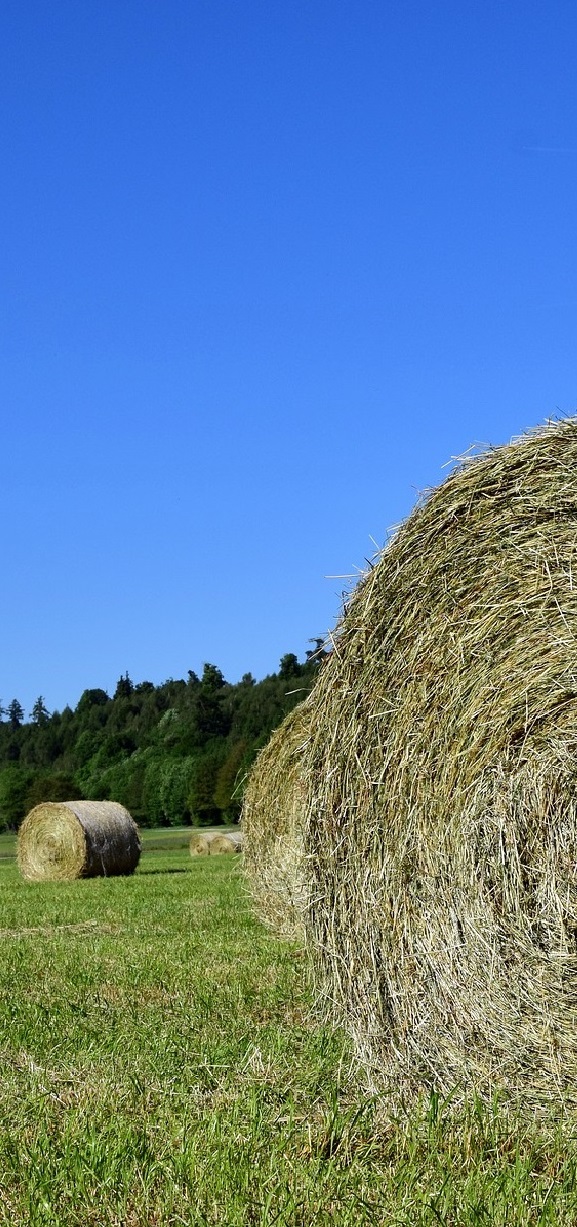
CONSULTING SERVICES
FORAGE & FEED QUALITY
Where Quality Impacts Nutrition
Forage and feed quality play a significant role in the productivity, growth, maintenance and/or reproductive capacity of livestock. Typically, the better the quality, the better the expected productivity. However, quality ultimately depends on plant stage, harvest conditions, and how the feed is stored. Growing conditions also impact quality. Some species of forages possess “anti-quality factors” that demean their quality; for example, bloating with alfalfa or nitrates in forages heavily fertilized with nitrogen fertilizer.
The lines grey significantly between ruminant (and equine) nutrition and forage quality. For ruminants, forages can be “too hot” or too high in quality for some types of animals, like dry pregnant cows or horses that just need to be kept in “maintenance” (not working or needing to gain weight). On the other side of the coin, forages can also be too coarse and low in quality, like with straw or low-quality hays. Where it’s relatively fine for horses, for ruminants like cattle it will create gut impaction issues and loss in weight.
Grasses follow an “S-curve” growth pattern. The first stage starts off slow when they are pulling energy from the roots to grow their leaves, and begin photosynthesis. The second stage begins when growth suddenly accelerates; between post-emergence and when the inflorescence (“seedhead”) pushes up to the top. The third and final stage is from flowering to seed set and senescence. Legumes follow a similar growth pattern; some species, however, like alfalfa, continue growing even through flowering to seed pod development. Quality starts very high at emergence, then declines the more mature the plants get. Yield tends to move in the opposite direction.
Harvest management for hay (or silage) relies on good timing. Cutting when plants are at around 10% flower is “optimum” for both good quality and yield. Grasses should be just starting to flower, where anthers and pistils emerge from the spikelet, releasing pollen to the wind. Perennials cut for silage (or baleage) are generally at the same stage. Annual cereals cut for silage are generally at milk to soft dough stage. Squeezing the seeds in between your fingers help you to see whether it’s ready or not.
Drying times before baling or chopping depend on the type of feed you want to store. Hay should be left to dry for a few days before being baled at around 15% moisture; 18% at the maximum. Smaller bales should be baled drier than large bales to reduce the time the bales need to go through a sweat period and the chance of overheating, ideally 10 to 12% moisture. Forage chopped for pit or bagged silage is harvested at 60 to 65% moisture. Baleage is harvested and wrapped at ~55% moisture.
Rain can cause issues when hay has been laying in the swath for a day or two. Leaching of nutrients makes for lowering quality hay because the swaths need more drying time before being baled. Silage harvested at too high moisture also leaches nutrients as water is squeezed out as forage compacts and ferments. Where hay just needs strings to keep things together, silage needs to be packed very well and completely sealed up to prevent oxygen from getting in.
There is always more to discuss when it comes to forage quality! From how to get a feed sample sent off to a lab, to the different ways to improve the forage quality of hay, silage, and pasture, we can get in touch and discuss your needs and how I can help you get the forage and feed quality you need.
How I Can Help You
The first contact is always free. These demo calls—or visits—give me the opportunity to see where things are at and if you’re a good fit for what I am able to help you with. Only after this will a fee be charged. (For the time being, clients outside of Canada will receive my services for free.)
You can get a hold of me in the following ways:
Phone:
+1(780)289-9143
EMAIL:
Be sure to include your email, phone number, name, location, and details of what you wish me to assist you with.

